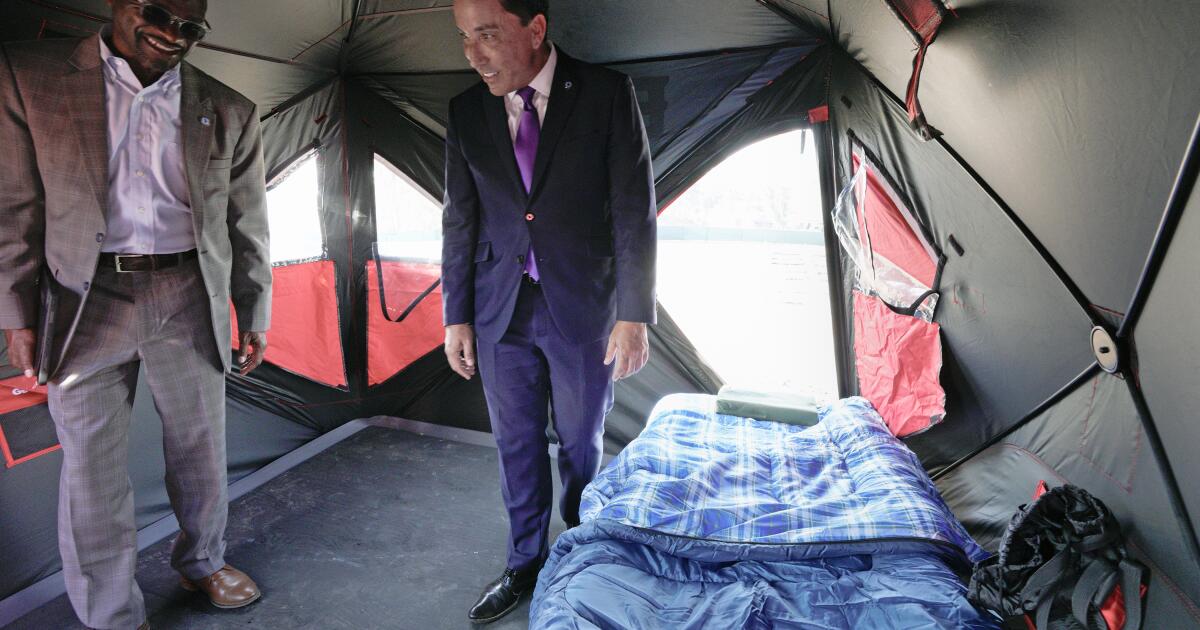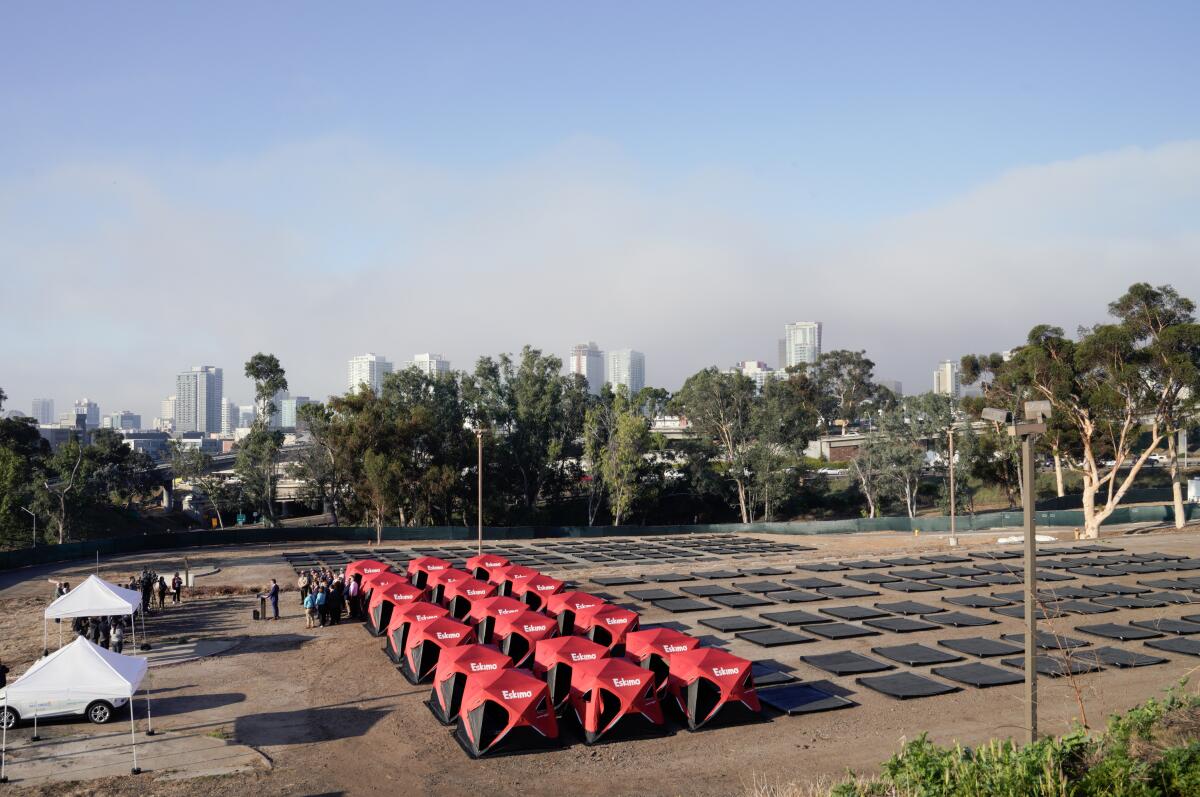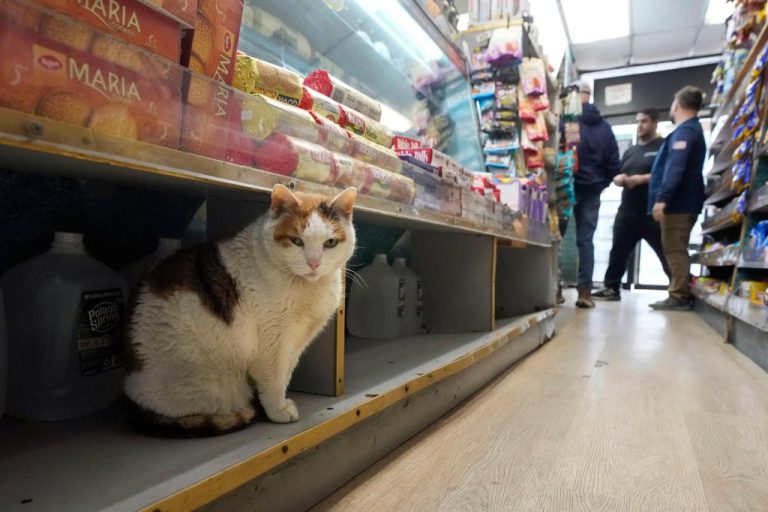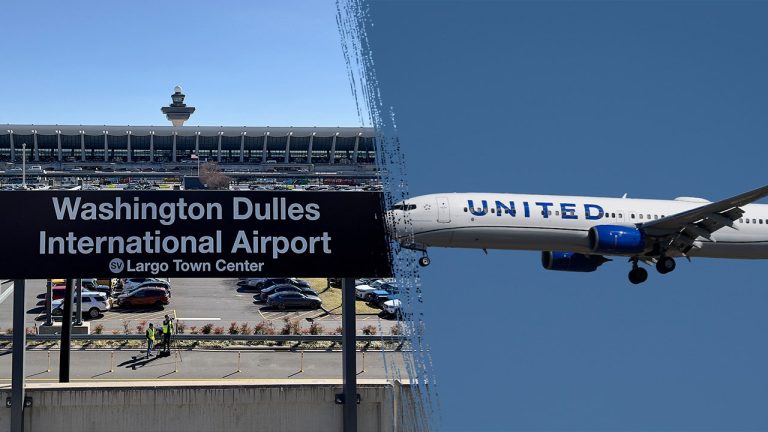
More than a dozen people have moved into San Diego’s second safe-sleeping site so far, with hundreds more likely on the way, as the city doubles down on legal camping amid increased encampment sweeps by police.
Nineteen individuals were staying in 17 tents as of Monday morning, two days after O Lot by Balboa Park formally opened, according to Dave Rolland, a spokesperson for Mayor Todd Gloria.
The site can hold a total of 400 tents and one operator said they hope to be around two-thirds full within weeks.
“We’re moving a step closer to where San Diegans want us to be,” the mayor said Friday at a press conference.
The move comes almost three months after officers began enforcing the city’s new camping ban. A spokesperson said police have made one arrest, issued eight tickets and given nearly 150 warnings about the ordinance so far. Poway and Santee have also passed their own types of camping bans, and the San Diego Board of Supervisors is scheduled Tuesday to discuss adopting similar rules elsewhere in the county.

San Diego Mayor Todd Gloria and other city leaders unveiled the newest safe sleeping site at a parking lot in Balboa Park on Oct. 20, 2023.
(Nelvin C. Cepeda/The San Diego Union-Tribune)
O Lot differs from the first safe sleeping site in several ways.
The new tents are larger, about 6 feet tall, have better insulation and sit on raised platforms, which could make a difference during heavy rain, said Sarah Jarman, director of the city’s Homelessness Strategies and Solutions Department. (Residents of the first lot had to temporarily relocate during Tropical Storm Hilary.)
Furthermore, the site is split into three areas, with one designated for people in recovery, officials said.
Other elements are not new: Each tent can hold up to two people and there will be on-site bathrooms, laundry, meals and case management, among other services. The nonprofits Downtown San Diego Partnership and Dreams for Change are overseeing the site.

Jason Miller, 49, stands outside San Diego’s first safe sleeping site on Oct. 12, 2023. Miller had been sober from fentanyl for 10 days after being put on an experimental drug.
(Ana Ramirez/The San Diego Union-Tribune)
Dreams for Change runs the first lot, at 20th and B streets, where nearly 150 people were living in more than 120 tents as of Friday.
In recent interviews, several residents were generally positive about the experience at the original location.
“Compared to being on the street, it’s a thousand times better,” said Jason Miller, 49, who said having a secure place to live combined with an experimental drug had recently helped him stop using fentanyl. Some of his neighbors complained that showers were only offered on site once a week, but staffers were working to improve the area, he said.
Tara Stamos-Buesig, founder and CEO of the Harm Reduction Coalition of San Diego, said it was easier to find people struggling with addiction when they weren’t constantly moving from sidewalk to sidewalk.
She and two colleagues walked the lot Oct. 12 offering Narcan, bandages and kits that can test drugs for fentanyl.
The site looked more lived-in than it had in earlier visits. Near one tent was a LEGO set of London, partially assembled. Car batteries, upturned bicycles, some plastic guns and containers of peanut butter, arranged like bowling pins, were visible. Wherever visitors turned, someone seemed to be walking a dog. One staffer said there were more than 30 animals, including cats, gerbils and fish.
Wide lanes remained between tents for emergency vehicles and the Porta Potty nearest the entrance was nearly spotless, with a schedule on the inside door listing several recent cleanings.
The newest lot shouldn’t struggle to find residents. The region continues to have nowhere near the number of beds needed to hold the more than 5,000 people sleeping outside countywide, and 100-plus names were recently on a list for the 20th and B site, according to Dreams for Change CEO Teresa Smith.
San Diego Councilmember Stephen Whitburn, who proposed the camping ban, said the lots were key to easing the homelessness crisis. “It has exceeded my expectations,” he said Friday.
Both sites are intended to be temporary. The mayor estimated last week that the newest one would remain for a year-and-a-half to two years, although the growing number of people losing homes could delay a closure. The city has been trying to phase out downtown’s Golden Hall shelter for months, but no end date is in sight as officials look for where to house the men currently inside.
San Diego Chief Operating Officer Eric Dargan suggested that the city may open additional camp sites if land is available.
“Many more are to come,” he said.





